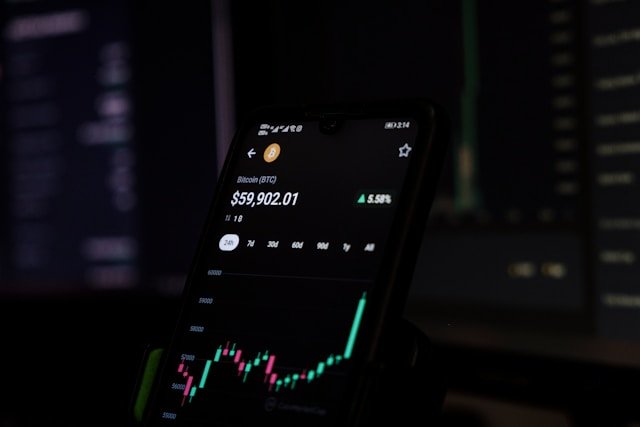Understanding Cryptocurrency Market Cycles
Understanding cryptocurrency market cycles is vital for investors and traders looking to make guided decisions and optimize their returns. Cycles in terms of the cryptocurrency market implies the steady swings in cryptocurrency values due to factors such as investor emotions, market entreaties, technological advancements, and innovation, and legislative changes.
This ultimate guide is a one-stop research article that unpacks and explains the ins and outs of cryptocurrency market cycles. The guide provides insights into the stages, factors affecting market assignment, and a successful approach to dealing with this sort of cycle.
1. What Are Cryptocurrency Market Cycles?
A cryptocurrency market cycle refers to the series of growth and decline observed in the market. The cycle is made up of several phases, including one peak and another low, which are associated with varying investment t sentiments and market activity. Investors may study the market to predict, identify and act on the phases.
2. The Phases of Cryptocurrency Market Cycles
Cryptocurrency cycles are generally defined by four states or phases. For instance, an accumulation cycle is followed by an uptrend, and then a downtrend, and lastly, distribution.
2.1 Accumulation Phase
The accumulation phase happens after an extended period of decrease, which stops at a new, lower level. Savvy investors and institutions begin to accumulate cryptocurrencies at low prices in anticipation of the next bull cycle.
The phase names a low number of transactions and lack of media attention as people become discouraged and wary of the market.
2.2 Uptrend Phase
This phase is commonly referred to as the bull market, and, as the name suggests, the costs of different cryptos start mounting sharply. The factor cause prices to rise during this phase might be good news or any kind of technological benefit, increasing optimism and enthusiasm of players.
The trading volumes also rise drastically as even more people become involved. Additionally, the bull market attracts new investors, which elevates the costs again. The cycle starts over again.
2.3 Distribution Phase
The distribution phase appears when the market peaks, and early investors release their positions to secure the income. This phase is marked by increased market volatility and trading volumes given the player’s fear. In the distribution phase, prices may rapidly oscillate due to the market shift from bullish to bearish.
2.4 Downtrend Phase
The downtrend phase, also called the bear market, is characterized by hard dumps in prices for all cryptocurrencies. Investors lose their confidence because of the negative news and actions of regulators, due to which trading volumes fall sharply and panic selling of assets begins. The hardest time for players on the cryptocurrency market is the downtrend phase — late investors who bought at the top suffer huge losses.
3. Factors Influencing Cryptocurrency Market Cycles
Cryptocurrency market cycles are influenced by several factors, among which are technological advancements, regulatory developments, market sentiment, and macroeconomic trends.
3.1 Technological Advancements
Market cycles are largely influenced by technological developments and evolution in blockchain and cryptocurrency technology. Market cycle growth is facilitated by the development of enhanced security protocols, the introduction of new use cases, and scalability solutions due to the positive market sentiment.
3.2 Regulatory Developments
Cryptocurrency markets may be volatile due to regulatory prospects. Developing and established regulatory measures have the potential to energize both traders and infuse the uptrend cycle, contributing to optimism if a new currency is legalized or a new currency finance item gets regulatory approval.
However, if prospective regulatory action is anticipated to be narrow and is thus expected to be stifling, it could be utilized to induce dread and part of the cycle.
3.3 Market Sentiment
Market sentiment, which reflects investor attitude and emotion, is another factor closely correlated with cryptocurrency market cycles. If the sentiment is positive, it triggered by media reports, social media enthusiasm, and public endorsement can push the current market cycle into an uptrend. On the contrary, if market sentiment turns negative due to security breaches, fraudulent activities, and troubling reports can accelerate the new downtrend cycle.
3.4 Macroeconomic Trends
Macroeconomic trends that occur due to interest rate fluctuations, changes in inflation, global economic conditions, etc., can affect the occurrence of cryptocurrency market cycles. Due to high economic instability and uncertainty, investors hedge in cryptocurrencies from traditional markets, which causes an uptrend phase. Therefore, a stabilized and growing economy causes decreasing interest in the use of cryptocurrencies and serves as a factor for a downtrend.
4. Strategies for Navigating Cryptocurrency Market Cycles
To develop effective investment strategies, you need to understand the cryptocurrency market cycles. Here are some strategies for traversing through these cycles successfully:
4.1 Dollar-Cost Averaging (DCA)
Dollar-cost averaging is another strategy in addition to portfolio rebalancing which suggests investing a fixed amount of money at fixed regular intervals, regardless of the market state. It is used to reduce risks related to market volatility by dividing the whole investment amount into parts and investing them in different time periods.
However, it works effectively during the accumulation and downtrend epoch, as it gives an opportunity to accumulate more assets during low prices.
4.2 Diversification
Diversifying means investing in more than one cryptocurrency as well as asset classes to manage risk. Having a diversified portfolio will help investors mitigate market volatility and capitalize on growth opportunities in other industries. At all points in the market cycle, effective risk management is critical, and one technique to help minimize risk is diversification. a
4.3 Technical Analysis
Technical analysis is the studies of past price information and trading volumes to see insights and trends in the market. Technical analysis provides measures such as moving averages, relative strength index, as well as Bollinger bands helping the investment to decide on when to buy and when to sell coins.
Technical analysis is efficient when the market is in an uptrend as well as in distribution, and results in making decisions on buying and selling coins.
4.4 Staying Informed
It is important to stay informed about the market, changes in regulation, and technological developments to successfully navigate cryptocurrency market cycles. To this end, investors must read news from credible sources, explore online forums, and participate in the broader cryptocurrency community to be aware of the latest trends and ideas. This helps them predict future movements and invest proactively.
4.5 Risk Management
Risk management is a necessary aspect of successfully transitioning the peaks and troughs of cryptocurrency market cycles. Three examples useful to investors and centred on the specific discourse presented are setting clear investment objectives, creating a stop-loss order, and not giving in to emotions for short-term trading.
Proper risk management helps investors safeguard their capital and reduce losses during declines. This is important to spend time maintaining profitability in the long run in an environment marked by vulnerability.
5. Conclusion: Mastering Cryptocurrency Market Cycles
The cryptocurrency market cycle plays an important role for an investor in the cryptocurrency market. Investors can now maximize their profits while minimizing their risk exposure by understanding market cycles and what drives them; this article discusses the market cycle skills. Cryptocurrency may choose to accumulate, average their cost, diversify, or use chart analysis, stay updated with the market and avoid its risks; ultimately, every investor needs to have a long-term strategy when it comes to cryptocurrencies.
FAQ on Understanding Cryptocurrency Market Cycles
1. What are the phases of cryptocurrency market cycles?
This phase defines a rise in the cryptocurrency market and accumulation of shares by investors. As a result of this, “Hodl” season happens as it becomes a trending season a b a c.
2. How do technological advancements affect cryptocurrency market cycles?
Technological advancements have lead to increasing positivity regarding market growth; hence an uptrend in the market cycle. Secured investment processes and investor scalability often result in more comprehensive market contributions.
3. What role do regulatory developments play in cryptocurrency market cycles?
Regulatory developments significantly impact over market cycles. Positive regulations can energize the market and drive uptrends, restrictive regulation can induce fear and force downtrends.
4. What is the importance of risk management in cryptocurrency investing?
Risk management is essential when navigating the cryptocurrency market’s volatility. The abovementioned included risk management strategies like setting clear objectives, creating stop-loss orders and avoiding emotional trading is what would ensure stakeholder’s capital is protected and losses are minimized.
5. How can investors stay informed about changes in the cryptocurrency market?
Read credible news sources, participate in online forums, and interact with the cryptocurrency culture. This way, you will be able to anticipate and forecast market trends before deciding where to invest.





